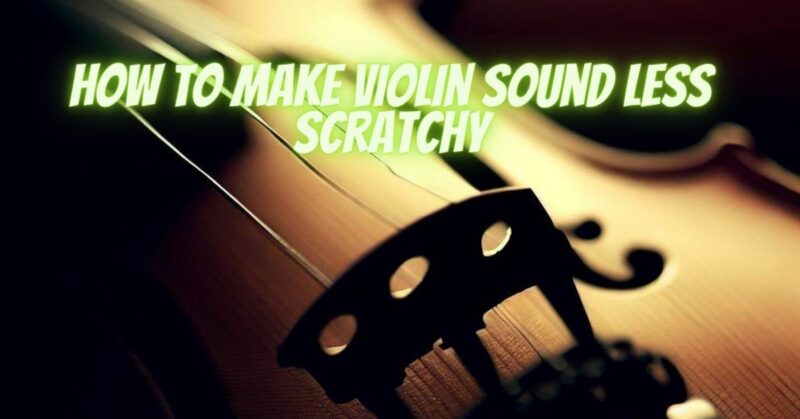A scratchy sound from a violin can diminish the enjoyment of playing and affect the overall quality of your musical performance. Fortunately, there are several steps you can take to make your violin sound smoother and eliminate the scratchiness. In this article, we will provide you with practical tips and techniques to help you achieve a more refined and pleasing tone from your violin.
- Bow Technique:
- Bow Pressure: Ensure that you apply sufficient and consistent pressure on the strings with your bow. Experiment with different amounts of pressure to find the sweet spot where the bow effectively engages the strings without causing excessive scratching or tension.
- Bow Speed: Control the speed of your bowing strokes. Smooth, even bowing at a moderate speed can help reduce scratchiness and promote a more refined tone.
- Bow Placement: Pay attention to the placement of the bow on the strings. Aim for a balanced position between the bridge and fingerboard to achieve a clear and resonant sound.
- Rosin Application:
- Apply an Adequate Amount of Rosin: Make sure your bow hair has enough rosin to grip the strings properly. Apply rosin evenly along the length of the bow hair, avoiding excessive amounts that can lead to a rough sound.
- String Care:
- Regular Cleaning: Clean your strings regularly with a soft cloth to remove rosin buildup, dirt, and oils that can contribute to a scratchy sound. Gently wipe the strings after each practice or performance to maintain their smoothness and clarity.
- String Replacement: If your strings are old, worn, or have lost their tonal quality, consider replacing them. Fresh strings can greatly improve the sound and playability of your violin.
- Instrument Setup:
- Bridge Alignment: Ensure that the bridge is correctly aligned and properly fitted to the violin. A well-aligned bridge allows the strings to vibrate freely without unnecessary contact with the fingerboard, reducing scratchiness.
- Soundpost Adjustment: Consult a professional luthier to assess the placement and fit of the soundpost. A properly positioned soundpost can enhance the resonance and overall sound quality of your violin.
- Environment:
- Humidity Control: Maintain a consistent humidity level in the room where your violin is stored. Extreme humidity changes can affect the wood of the instrument and contribute to scratchiness. Use a humidifier or dehumidifier if necessary.
- Professional Guidance:
- Consult a Violin Teacher or Luthier: Seek guidance from a violin teacher or luthier who can assess your technique, instrument setup, and suggest personalized adjustments to help reduce scratchiness.
Conclusion:
With attention to bow technique, rosin application, string care, instrument setup, and environmental conditions, you can significantly reduce scratchiness and achieve a smoother and more pleasing sound from your violin. Remember to practice proper bowing techniques, maintain clean strings, apply rosin appropriately, and seek professional assistance when needed. With dedication and consistent effort, you will enhance the beauty and quality of your violin’s sound, allowing you to fully express yourself and enjoy the art of playing.


